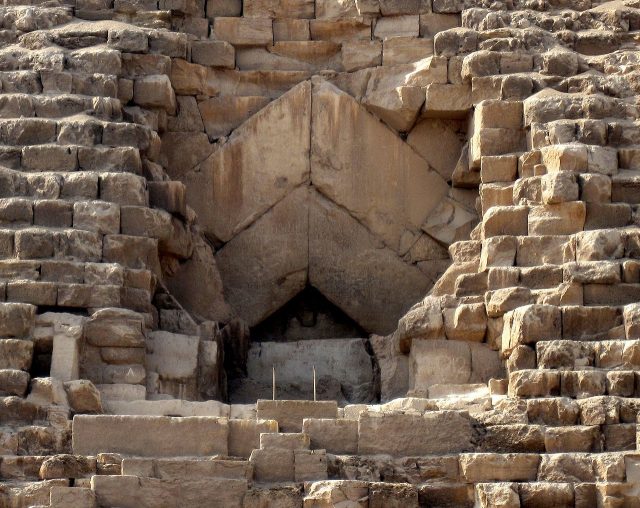When British engineer Waynman Dixon came back from a trip to the Queen’s Chamber, deep within the Great Pyramid of Giza, in 1872, he brought with him a piece of wood that was thousands of years old, along with two other items.
Part of a collection of artifacts known as the “Dixon Relics,” two of the artifacts promptly went to the British Museum.
The shard of wood, however, somehow got lost in the vast collection of the University of Aberdeen’s Asia collection, after the daughter of Dixon’s friend, James Grant, donated it in 1946.
It was an absolute fluke that this vital – though small – artifact was found recently by an archaeologist who works at the university as an assistant curator, Abeer Eladany.

She is, in another delightful coincidence, from Egypt originally, and could not believe it when carbon dating tests revealed the age of the wood, which experts speculate predates the construction of the pyramid itself. No one is sure, precisely, why the wood was put inside the pyramid – was it from a tree that was near by. Or an old tool for measurements– but experts are just as excited about its age as the find itself.
Neil Curtis, head of museums and special collections for the university, told the Guardian, “Finding the missing Dixon Relic was a surprise, but the carbon dating has also been quite a revelation. It is even older than we imagined.” (The other two relics were a ball and a hook).
Tests show that the wood dates between 3341 and 3094 B.C. The pyramid, on the other hand, was built about 500 years prior. One thing is certain, Curtis added: “This discovery will reignite interest in the Dixon Relics, and how they can shed light on the Great Pyramid.”
One person who is particularly thrilled that the relic, lost for more than 100 years, has finally been discovered is Eladany herself, in no small part because she is from Egypt.
As an archaeologist and researcher, she is all too aware of how important the find is to her native country, but she also sees the humour and irony of finding an artifact in Scotland that is, in a sense, a part of the Great Pyramid.
She said that trying to find the lost relic has been like “…looking for a needle in a haystack. I couldn’t believe it when I realized what was inside this innocuous-looking cigar tin.”
Like so many archaeological finds – pieces of human teeth, bits of leather from the sheath of a sword – the find doesn’t look like much to the untrained eye.

In truth, the wood looks much like the remains of a campfire log, or what’s left after a small construction project made of wood. It’s clearly from a piece of wood that was once much bigger.
But to archaeologists, who are the finders – and keepers – of all kinds of knowledge about how human beings developed and evolved – the ancient shard is a breathtaking window into greater wisdom about the pyramid and its contents.
Why was the wood put there? Was it dropped by accident or placed by deliberate design? And did the pharaoh who ruled at the time insist it be left there, in order to give future societies clues about who lived in Egypt all those centuries ago?
These questions are in the hands of the experts now – the scientists, archaeologists, and others – who will no doubt examine the wooden relic through a professional lens, as evidence never before garnered about the Great Pyramid of Giza.
Another Article From Us: The Greatest Archeological Looter Has Finally Been Caught
A small piece of wood that is profoundly, incredibly significant – and was found thousands of miles from its original resting place.
